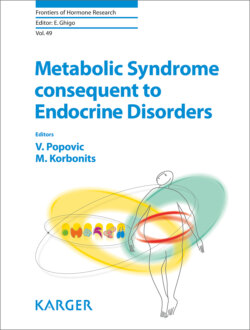Читать книгу Metabolic Syndrome Consequent to Endocrine Disorders - Группа авторов - Страница 16
На сайте Литреса книга снята с продажи.
Dyslipidemia in GHD and Responses to GHRT
ОглавлениеAdults with GHD have unfavorable lipid profiles characterized by increased total and LDL cholesterol and triglycerides, while decreased HDL was observed only in women [27]. GHRT significantly improves lipid profiles in these patients [27–33]. Significant decrease in total and LDL cholesterol and increase in HDL cholesterol during short- (1–2 years) and long-term (5–15 years) GHRT were reported [28–31]. GHRT may also lower triglycerides although in meta-analysis, including 37 trials, positive effect of GHRT was confirmed only on total and LDL cholesterol [32]. The effect on triglycerides was neutral [32].
Small dense LDL, which may be an independent cardiovascular risk factor, is also common in GHD patients, but GHRT did not affect size of LDL particles [34–36]. Oxidative stress plays an important role in pathogenesis of atherosclerosis mediated by lipid peroxidation in particular of LDL. Oxidative stress is increased in GHD and improves with GHRT [37]. Increase in oxidated LDL was also observed and short-term GHRT was able to reduce lipid peroxidation in GHD [38, 39]. Finally, additive effect of combined statin and GH replacement treatment was observed in these patients [40].
Fig. 1. Pathogenesis of metabolic syndrome (MetS) and its components in patients with hypopituitarism and growth hormone deficiency. Used with permission from Lancet Oncology, reference number 4177570097030 [104].
